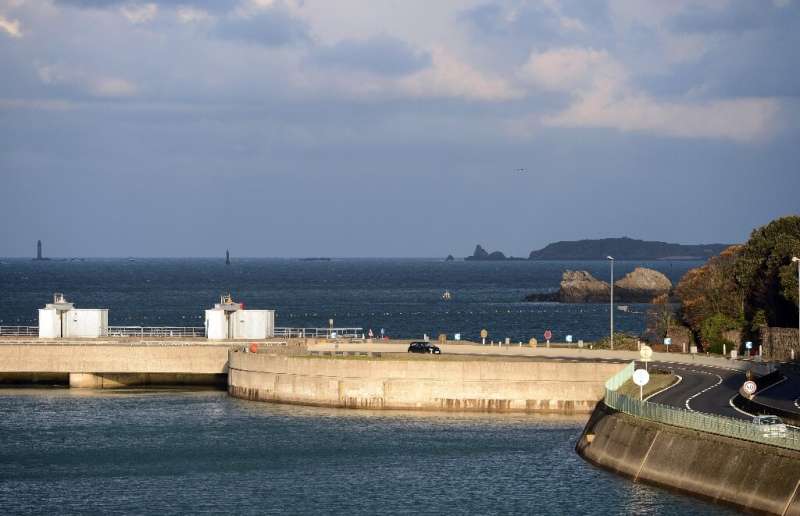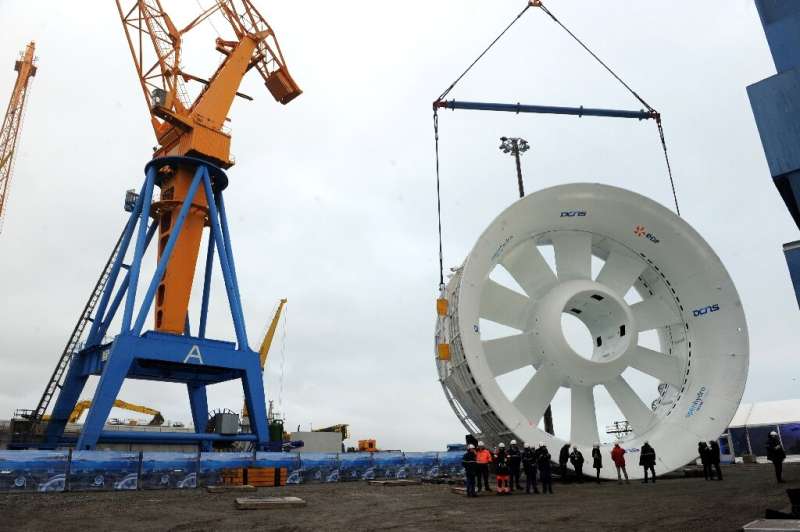Ocean power: A green option failing to make waves

The tidal power plant on the Rance river in Brittany, France, stands as a reminder of the underexploited potential of energy generation from ocean tides, waves and warmth.
Inaugurated at La Richardais on the west coast by Charles de Gaulle in 1966, the plant produces about 500 Gigawatt hours of electricity per year—enough to power 250,000 out of France's 30 million-odd households.
It remains the sole power station of its type in France and one of only two large-scale tidal plants in the world—the second largest after the Sihwa scheme inaugurated in South Korea seven years ago.
"Ocean renewable energy has huge global potential, but is a largely untapped resource," Simon Neill of Bangor University's School of Ocean Sciences in Wales told AFP.
More than two-thirds of the Earth's surface is covered by oceans and seas.
These offer limitless opportunity for power generation from the kinetic energy of waves and tides, the temperature differences between surface and deeper waters, and the osmosis that occurs when salt- and freshwater meet.
Yet ocean power accounts for the smallest portion of renewable energy in the world, according to the International Energy Agency (IEA), an intergovernmental policy-advisory body.
The majority of marine energy projects are in the demonstration phase even though many decades have passed since humanity first started using water motion for electricity generation in the late 19th century.
Entirely predictable power source
Despite being a renewable, low-polluting energy source, hydropower, which includes ocean and river dam schemes, today accounts for less than a fifth of global electricity supply, and growth in the sector is decelerating.
Electricity generation from marine technologies increased by just three percent last year.
The IEA estimates it would need to expand by 24 percent per year until 2030 to meet desired targets for renewable energy.
According to France's SHF hydrotechnic research institute, tidal energy has the potential to provide 1,250 Terrawatt hours (TWh) of energy per year, up from just one TWh today—about 0.2 percent of France's annual consumption.
It has a distinct advantage in being "entirely predictable", Neill said. As it is not dependent on weather variables such as wind or sunshine, the contribution of tidal schemes to the energy mix can be calculated far in advance.
Tidal energy is generated by installing a dam-like structure called a barrage across a bay or lagoon to create a basin which is filled on the incoming high tide and emptied through turbines as the water ebbs out again.

The main challenge, observers say, is the cost of erecting these structures.
"Marine technologies hold great potential, but additional policy support is needed for RD&D (research and development) to enable the cost reductions that come with the commissioning of larger commercial plants," says the IEA.
'Enormous environmental impact'
An additional drawback are the effects on plant and animal life.
The Rance barrage is 750 metres (820 yards) long and 33 metres wide and blocks the river mouth.
"Tidal barrages can change the tidal level in the basin and increase turbidity (the amount of matter in suspension in the water)," said the IEA.
The turbines may impair the natural movement of marine animals and disrupt migration patterns.
At the Rance plant, "exchanges between the estuary and the marine environment have been completely blocked, which has had an enormous environmental impact," marine ecologist Antoine Carlier of France's Ifremer institute told AFP.
One solution is to build future tidal plants outside of sensitive estuary zones.
Another underused technology that has failed to take off despite its low environmental impact: tidal turbines placed on the sea floor where there is strong tidal flow.
"There are problems with sealing, corrosion and maintenance on these underwater machines, which adds to the cost of the projects," explained Ifremer's Marc Le Boulluec.
Similarly lagging are technologies seeking to harness ocean waves or swells, temperature variation, and osmosis.
"Technology innovation and learning by research are key to advance ocean power to maturity," said the IEA.
"Research should focus on key components and sub-systems, simplifying installation procedures to keep costs down."
A UN Climate Action Summit in New York next Monday will see governments, business leaders and international organisations discussing ways to achieve the desired transition to renewable energy.
© 2019 AFP
















